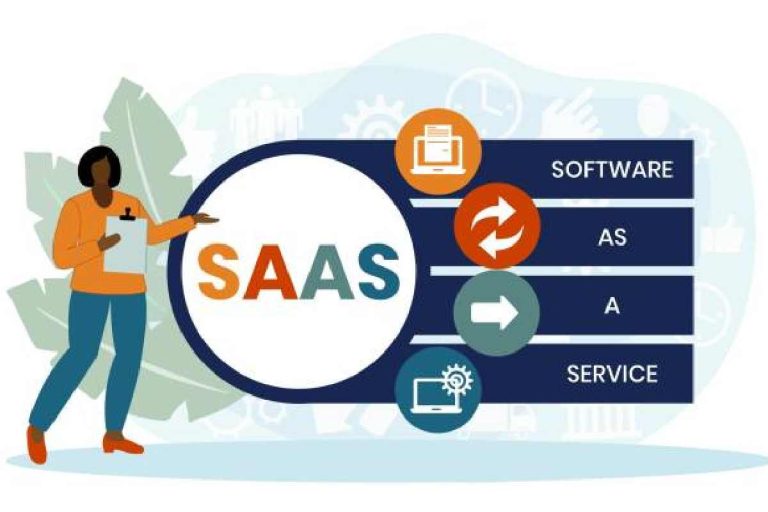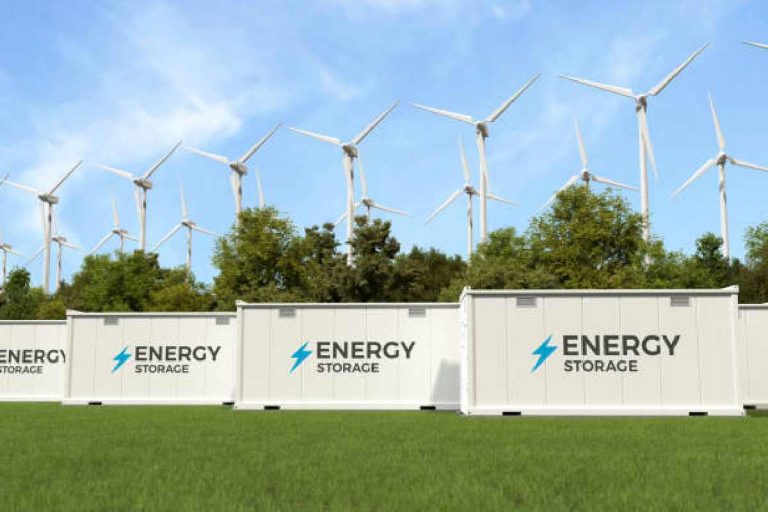Overview
Why is every business suddenly talking SaaS? Simple, because in today’s fast-moving world, agility and scalability are no longer nice-to-haves. They decide whether a company grows or gets stuck. And that’s exactly where Software as a Service, or custom SaaS solutions step in as the new blueprint for modern business.
Think about it. Remember when companies had to buy expensive software, install it on physical servers, wait weeks just to get started? That model just doesn’t work anymore. Today, businesses can’t wait weeks as they need answers now. SaaS delivers those answers.
So, what exactly is SaaS?
It’s software delivered over the internet that you can access anytime, anywhere, without hardware headaches. You pay for what you need, use it right away, and scale up or down depending on your growth.
- Need to expand into a new market without setting up massive IT infrastructure? SaaS has you covered.
- Want your team to collaborate across global offices in real time? SaaS makes that possible.
- Looking for predictable costs instead of unexpected IT bills? SaaS keeps it simple.
Can SaaS really make my business more agile?
Yes. With instant access to tools, updates, and integrations, your business adapts faster to changes.
What about scalability?
That’s the best part. SaaS grows with you. Start small, add features or users as you expand, and never worry about heavy infrastructure investments.
Here’s the truth: SaaS is more than just software. It’s a growth model. It’s how startups turn into global players and how enterprises stay lean despite their size.
So when someone asks, “Why is everyone talking about SaaS?” the real question is, “Why wouldn’t they be?”
Why Businesses Can’t Afford to Stay Rigid
If you see, most businesses today don’t just compete with their next-door rivals anymore. They compete with global players, startups that can pivot overnight, and customer expectations that shift faster than ever.
In this kind of environment, agility and scalability are no longer feel-good buzzwords. They are what decide whether you thrive or fall behind.
And here’s the problem: too many companies still rely on rigid, traditional software systems.
You know the type, big installations, heavy maintenance, and the constant fear that one upgrade will break everything else. These systems might have worked a decade ago, but when growth spikes, they fall apart.
Why? Because growth looks messy without SaaS.
- Systems get fragmented, data lives in silos, and teams end up chasing information instead of customers.
- Updates are clunky, often needing IT teams to pause half the business just to keep software running.
- And the costs? Maintenance fees creep up like a hidden tax every year.
Can you double your customer base overnight with that old ERP still sitting in the server room?
Not likely. It wasn’t designed for that kind of elasticity.
Could a SaaS solution handle that customer surge?
Absolutely. That’s the whole point. SaaS flexes with your demand, seamlessly scaling without putting your operations into panic mode.
The truth is, rigidity costs more than flexibility. Every delay in adapting to change, every expensive software upgrade, every missed opportunity to scale faster, all of it adds up.
Businesses that remain stuck in outdated systems are not standing still; they’re moving backward while the SaaS-powered competitors sprint forward.
So ask yourself: can your business really afford to stay rigid? Or is it time to adopt the model built for growth, SaaS?
How SaaS Improves Business Agility and Scalability
SaaS solutions play a major role in what businesses can achieve using software. It fundamentally enables enterprises to unlock several possibilities including the below.
Faster Deployments, Faster Decisions
Think about this: how long did it take businesses in the past to roll out a new software tool? Sometimes months, right? With SaaS, that waiting game is over. Deployment is nearly instant—you log in, set up your account, and you’re ready to run. And when updates drop, they don’t derail your operations; they just slide in quietly so that your teams can keep moving.
- New tools available in hours, not months.
- Continuous updates without downtime or IT emergencies.
- Faster adoption by teams since interfaces feel intuitive.
- Rapid time-to-value, so ROI comes quicker.
Built-in Flexibility for Changing Needs
Markets shift. Customer demands evolve. Teams grow or shrink. Old-school software can’t keep up with that rollercoaster, but SaaS thrives in it. Flexibility is baked in—you simply adjust as your needs change rather than rebuilding from scratch.
- Scale user accounts up or down without massive costs.
- Add or remove features as the business evolves.
- Pay only for what you use, not for unused “extras.”
- Stay competitive by aligning tools with real-time needs.
Collaboration Without Borders
Here’s a question: how do you keep a team in New York, London, and Singapore aligned on one project? With SaaS, geography stops being a barrier. Everything lives on the cloud, so your workforce can collaborate in real time, on the same platform, without messy version control headaches.
- Anytime, anywhere access for distributed workforces.
- Shared data across departments in real time.
- Reduced reliance on endless email chains and file transfers.
- Smarter teamwork with integrations into communication tools.
Scaling Without the Infrastructure Strain
Remember the days of buying extra servers just because your business might grow? It was expensive, stressful, and often wasteful. SaaS changes the model entirely. Scaling doesn’t require new hardware or IT labor—it’s as simple as upgrading your plan or adding capacity in the cloud.
- No capital expenditure on infrastructure.
- Horizontal scaling for more users and data.
- Vertical scaling when new features are needed.
- Zero disruptions during growth surges.
Agility through Data and AI Insights
Here’s where SaaS really flexes its muscles. SaaS tools don’t just host your business functions—they also analyze them. Through built-in analytics and AI-powered insights, decision-making becomes faster and more accurate. That’s true agility: predicting challenges before they derail strategies.
- Real-time analytics dashboards for quicker decisions.
- AI-driven forecasts that highlight trends and risks early.
- Personalized insights for different business roles.
- Smarter resource allocation, based on data instead of guesses.
Together, these five capabilities explain why SaaS is not just another tech option—it’s the foundation for agility and scalability in high-growth businesses.
How AI is Changing SaaS for Smarter Business Growth
It’s no longer enough for SaaS to just “do the job.” Businesses want more than software that runs in the cloud, they want platforms that think, connect, and learn.
That’s why modern SaaS has moved way past being just a tool. It’s now an ecosystem. An interconnected web where AI, data, and integrations drive agility and smarter scaling.
Let’s break it down. Imagine your CRM system not only storing leads but also predicting which ones are most likely to close. Or your HR platform automatically surfacing retention risks before turnover spikes. That’s what happens when AI layers on top of SaaS.
With artificial intelligence services on the rise, AI insights enable your business to predict, adjust, and stay three steps ahead.
But there’s another piece: integration. SaaS today doesn’t exist in silos. It plugs into your CRM, finance tools, HR systems, even your analytics stack. The result? Everything’s connected. No more dashboards that don’t talk to each other.
- Unified data across every department
- Real-time analytics instead of monthly reports
- Workflows that move smoothly because systems are synced
Now here’s the kicker: when SaaS, data, and AI combine, decision-making upgrades from good to game-changing. Leaders are no longer making calls based on gut instinct or stale numbers as they’re using fresh, connected insights that tell a complete story.
So ask yourself this – what if your SaaS suite knew exactly where your next revenue spike would come from?
Or which market is primed for expansion before you get there? That’s the SaaS-plus world. Not just tools, but intelligence. Not just systems, but ecosystems.
Business Impact: What Companies Gain
At the end of the day, decision makers aren’t just asking “what does SaaS do?” They’re asking, “What’s in it for my business?” That’s where the real impact of SaaS shines, because it translates directly into outcomes they actually care about.
To make things work for your business, the better and easy way is custom SaaS. Partner with a custom SaaS development company like Tech.us to cut down the time it takes to get products to market. No more waiting on long IT rollouts or infrastructure headaches.
You spin up a new tool, integrate it into your workflows, and you’re ready to launch. Faster entry into markets means faster revenue.
Now, let’s talk ROI. Traditional software comes with hefty budget with licensing fees, upgrades, and endless maintenance. SaaS flips the model, predictable monthly costs, no surprise bills for servers, and a pricing structure that scales with you instead of against you.
And here’s the underrated benefit that is resilience. When disruptions hit, whether that’s market volatility or a sudden surge in demand, companies plugged into SaaS adapt far quicker. It’s flexible, but at an enterprise scale.
That means SaaS isn’t just delivering software. It’s delivering speed, cost savings, resilience, and innovation, in other words, the exact levers executives pull to grow.











